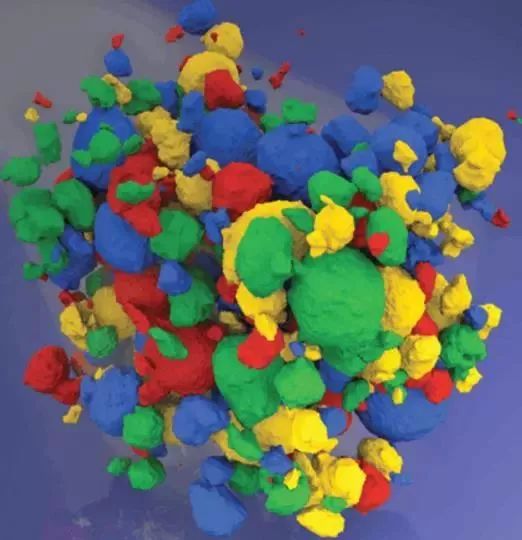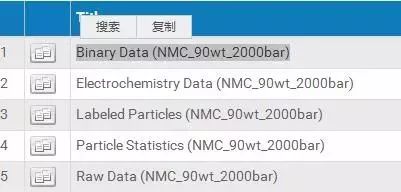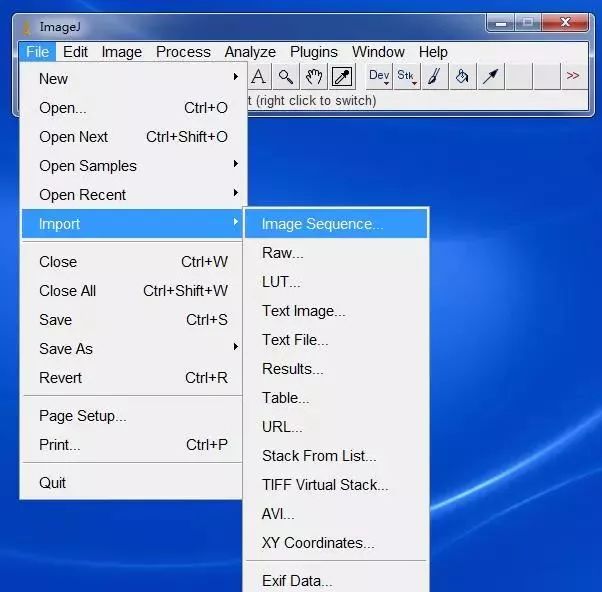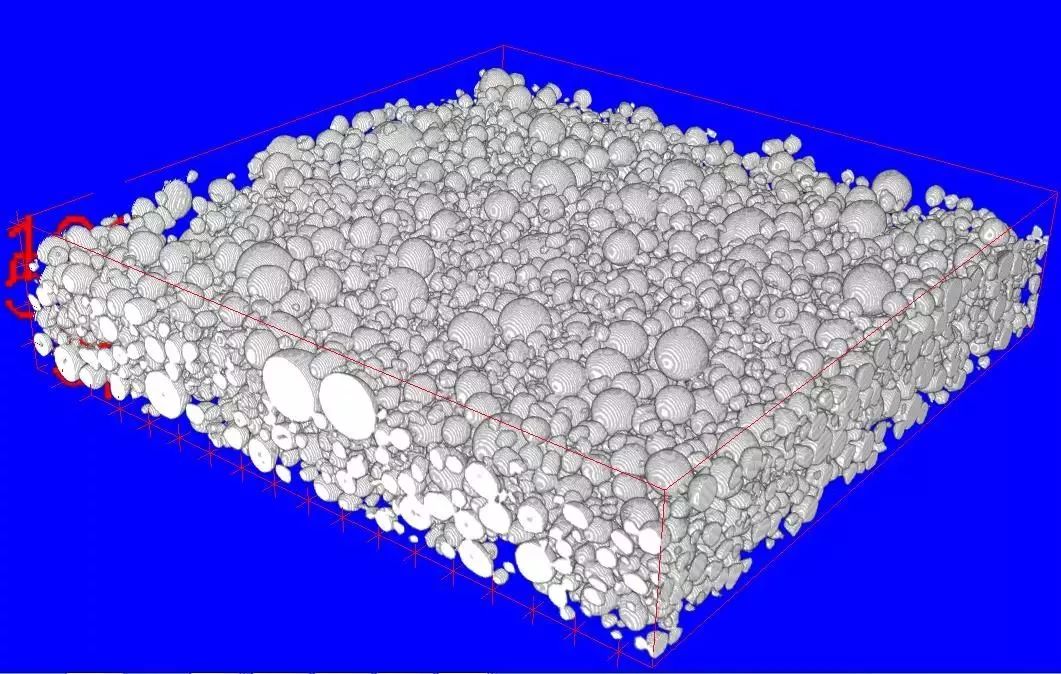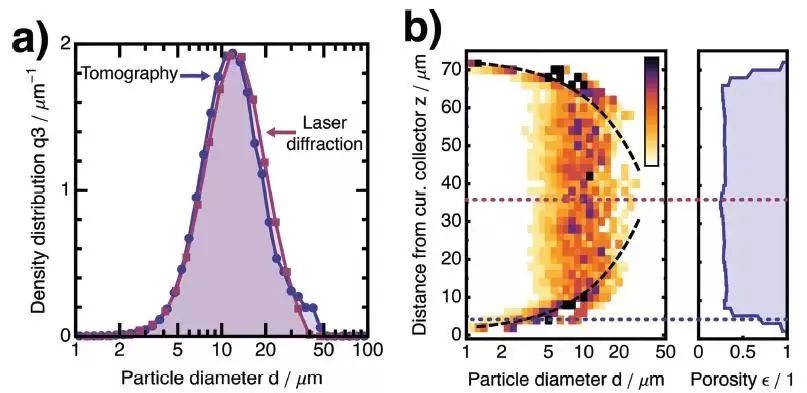The real experimental data of the pole piece micro-structure, usually using a stochastic model to generate a simplified image of the battery pole piece microstructure, is often different from the actual structure. The microstructure of the lithium-ion battery pole piece has a major influence on the battery performance. At present, the use of computer simulation technology can simulate the relationship between the lithium-ion battery microstructure and battery performance. However, due to the lack of real experimental data of the battery pole piece microstructure, a stochastic model is usually used to generate a simplified image of the battery pole piece microstructure, which is often different from the actual structure. Martin Ebner et al. of the Zurich Federal Institute of Technology launched a battery microstructural project that uses X-ray tomography to acquire micro-structured images of cells, providing free downloads of three-dimensional microstructures and electrochemical data for porous electrodes and separators for lithium-ion batteries. Lithium-ion battery pole piece can be regarded as a kind of composite material, which is mainly composed of four parts: (1) active material particle, insert or extract lithium ion, positive particle provides lithium source, negative electrode particle accepts lithium ion; (2) conductive agent and bonding The reagents are mixed with each other in the composition phase (carbon adhesive phase), the binder binds the active material particles, the coating and the current collector, and the conductive agent conducts electrons; (3) the pores are filled with the electrolyte, which is the transfer of lithium ions in the pole pieces. The channel; (4) current collector. In the electrochemical process, the pole piece coating mainly includes the following processes: (1) electron transport; (2) ion transport; (3) charge exchange at the electrolyte/electrode particle interface, ie electrochemical reaction; (4) Diffusion of lithium ions in the solid phase. (See the article for a detailed explanation of the process: Lithium-ion battery pole piece mechanism). In the microscopic structure of the pole piece, the size and distribution of the particle size will affect the lithium ion diffusion path and the specific surface area of ​​the electrochemical reaction. The size and distribution of the pore size will affect the transmission process of the electrolyte. The pore curvature determines the lithium ion transmission distance, and so on. These microstructural features will eventually affect the battery performance. Using the open-source data of the battery microstructure, researchers can study the micro-structure characteristics of the battery pole, the microscopic mechanism of the battery, and the micro-structure control technology. For example, using the three-dimensional data of these battery pole pieces to generate a finite element model, taking these real microstructure models as input, simulating the performance of the battery, and establishing the relationship between the microstructure and the electrochemical performance. Our actual battery designers and manufacturers can also use these data to intuitively understand and understand the microscopic structural features of the battery pole pieces, enabling optimization and more precise control of the pole piece's microstructure. The following is a brief description of open source data and examples of three-dimensional image reconstruction process. The open-source data of the electrode microstructure are mainly NMC111 positive pole pieces, including active material NMC111: binder PVDF: conductive agent Super C65 ratio is respectively 90:5:5, 92:4:4, 94:3:3, 96:2 :2 Four formulas of pole pieces, each of which were subjected to rolling pressure in 0T, 300T, 600T, and 2000T pressure conditions respectively, totaling 16 pole pieces. Due to the limited resolution of X-ray CT scans, the microstructure of the pole piece can only distinguish between the particles of the active material and the two phases of the pores. The carbon paste phase is considered as a pore. Electrochemical data was tested by assembling pole pieces into button half cells. Use ImageJ software (free and open source software, download address: http://imagej.net/Downloads) to perform three-dimensional image reconstruction on the polar image sequence. The steps are as follows: (1) Download Binary Data data from open source database, as shown in Figure 1; Figure 1 Open source data list (2) Open ImageJ software, first use the File> Import> ImageSequence command to import the binarized image sequence (binarized folder) in the form of virtual stack, as shown in Figure 2; Figure 2 Import Binary Image Sequence (2) Then build a three-dimensional model, the specific steps are as follows: Plugins>> 3D> > 3D Viewer, the operation steps shown in Figure 3. Figure 3 Build a three-dimensional model (3) The view of Fig. 3 can be manipulated to set the background color, rotation angle of view, zoom-in, etc. The 3D microstructure of a lithium ion battery pole piece is shown in Fig. 4. Figure 4 3D microstructure of a lithium ion battery pole piece After obtaining the above 3D microscopic structure, we can calculate the particle size distribution, porosity, channel curvature and other parameters of the active material particles, as shown in Figure 5. Figure 5 Particle Size Distribution and Porosity Distribution
Membrane switch is an operating system that integrates key functions, indicating elements and instrument panels. It consists of four parts: panel, upper circuit, isolation layer and lower circuit.
When the membrane switch is pressed, the contacts of the upper circuit are deformed downward, and are in contact with the pole plate of the lower circuit.
After the finger is released, the contacts of the upper circuit bounce back, the circuit is disconnected, and the circuit triggers a signal. The membrane switch has strict structure, beautiful appearance and good sealing performance. It has the characteristics of moisture resistance and long service life.
Widely used in electronic communication, electronic measuring instruments, industrial control, medical equipment, automobile industry, smart toys, household appliances and other fields.
Can provide customers with professional product design. We HAVE accumulated MANY years of experience in Japanese customers, the company has stable quality management experience in mass production orders and can meet the customer's delivery time requirements and quality requirements on time. Now our products are widely used in communications, medical, electronics, digital, watches, automobiles and other high-end fields. With the ISO9001 factory certification, we have gradually become the industry leader with good management, leading technology, excellent quality, timely delivery and thoughtful service. Membrane Switches, Poly Membrane Switches, Home Appliance Membrane Switch, Membrane Switch with Leds China Diy Membrane Switch KEDA MEMBRANE TECHNOLOGY CO., LTD , https://www.kedamembrane.com